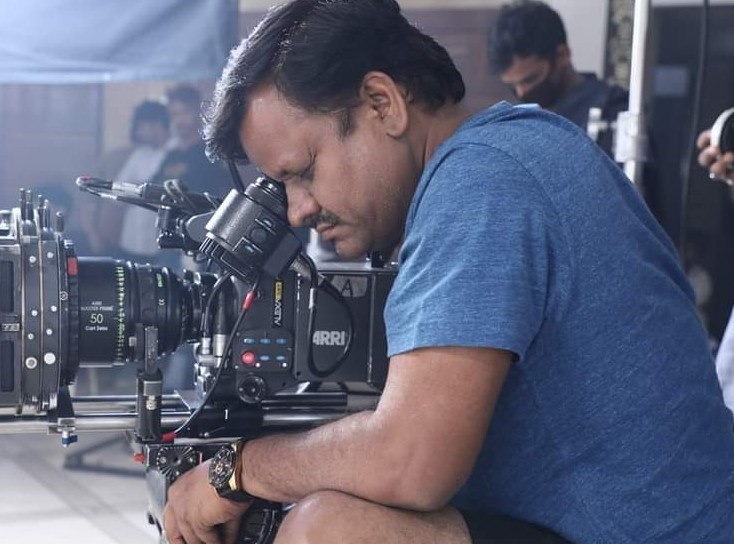
How to Become a Cinematographer: A Complete Beginner’s Guide to Understanding Cameras and Photography
If you’re passionate about storytelling through visuals and dream of becoming a cinematographer, the first step is understanding the basics of photography and camera operation. Whether you’re using a DSLR, mirrorless camera, or even a smartphone, learning how cameras work and how to shoot effectively will build a solid foundation for your journey.
This blog covers all the essential concepts — from camera basics to composition, settings, care, and shooting tips — making it the perfect starting point for beginners.
🎥 Understanding the Basics:
What Is a Camera?
A camera is a device used to capture light and create images, either as photographs or videos.
What Is the Main Purpose of a Camera?
Its main goal is to record moments and tell visual stories through still or moving images.
Photo vs. Video:
A photo is a single image.
A video is a sequence of photos (frames) played in rapid succession, creating the illusion of motion.
Basic Camera Parts:
Lens: Focuses light onto the sensor.
Body: The main part housing the sensor and controls.
Shutter Button: Captures the image or starts recording video.
Viewfinder/LCD: Helps frame your shot.
Memory Card: Stores photos and videos.
Battery: Powers the camera.
Common Camera Types:
Point-and-Shoot: Simple, automatic settings.
Digital Cameras: Capture and store digital images.
Smartphone Cameras: Convenient and often powerful.
DSLR & Mirrorless: Offer manual controls and better quality.
Important Terms:
Megapixels: Affect image resolution (but more isn’t always better).
Image Resolution: Refers to the detail in an image.
File Formats: JPEG is common, easy to share.
Video Resolutions: HD (720p), Full HD (1080p), 4K, etc.
Frame Rate: Frames per second in video (e.g., 24fps, 60fps).
Zoom: Optical (true lens zoom) vs. Digital (cropping).
📸 Basic Camera Settings
Focus
Brings your subject into sharpness.
Autofocus: The camera chooses what’s sharp.
Manual Focus: You control it yourself.
Exposure
Exposure controls how light or dark your photo is. It depends on:
Aperture (f-stop): Controls how much light enters.
Wide aperture (f/1.8): More light, shallow depth of field.
Narrow aperture (f/16): Less light, deep focus.
Shutter Speed: How long the camera sensor is exposed.
Fast (1/1000): Freezes motion.
Slow (1/30): Blurs motion, good for night shots.
ISO: Sensitivity to light.
Low (100): Best in bright light.
High (1600+): Useful in low light, but adds noise.
Modes:
Auto Mode: Camera handles everything.
Scene Modes: Preset settings like portrait, landscape, macro, night, sports.
White Balance: Adjusts colors to match lighting (daylight, cloudy, tungsten).
🖼 Composition and Framing:
Photography isn’t just about settings—it’s also about how you frame your shot.
Rule of Thirds: Divide the frame into 9 parts; place subjects on the lines.
Leading Lines: Guide viewer’s eye.
Symmetry & Patterns: Create visual harmony.
Framing: Use natural elements to create a “frame within a frame.”
Negative Space: Leave breathing room around subjects.
Perspective: Change your angle to tell a different story.
Shot Types:
Wide shot, medium shot, close-up
Eye-level, high-angle, low-angle, Dutch angle
🛠 Basic Care and Maintenance:
Hold the camera steadily (use both hands).
Use a tripod or stabilize elbows to avoid blur.
Clean lenses gently with microfiber cloths.
Store in a dry, dust-free place.
Avoid touching the lens or sensor directly.
Learn how to insert memory cards and charge batteries properly.
🚀 Getting Started and Improving:
When you get your first camera:
Read the manual.
Practice with everyday subjects (pets, people, plants).
Learn from YouTube, blogs, books, and free courses.
Don’t fear mistakes—review your photos and improve.
Explore basic editing (brightness, contrast, cropping).
Shooting Tips:
Shoot in natural light for better results.
Use burst mode for action shots.
Use a timer for group photos or selfies.
Experiment with both horizontal and vertical compositions.
🌟 Going Beyond the Basics:
As you grow:
Explore prime vs zoom lenses.
Learn to use a tripod.
Shoot in RAW for high-quality edits.
Understand post-processing and histograms.
Dive into metering and the exposure triangle.
Final Thoughts
Becoming a cinematographer doesn’t happen overnight. But starting with the basics — understanding your camera, how light works, and how to frame a good shot — builds your visual instinct. From photography fundamentals to video techniques, every step brings you closer to mastering the art. Practice. Learn. Observe. And shoot — a lot.